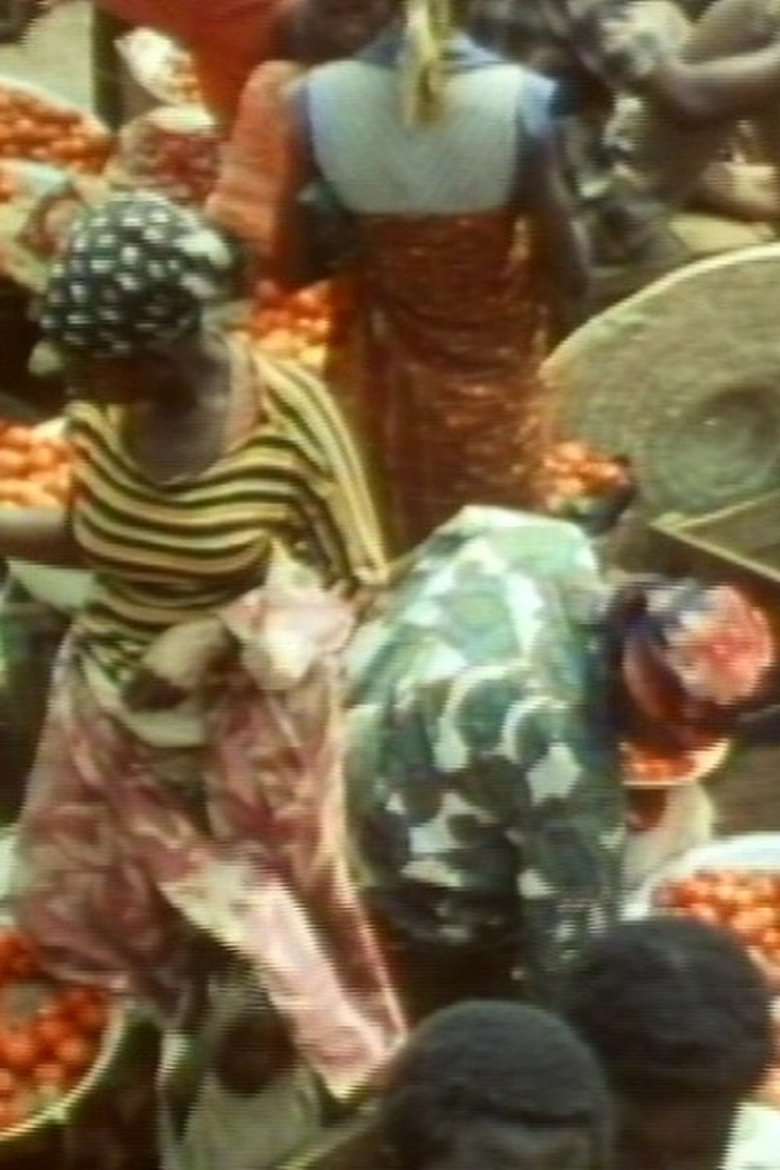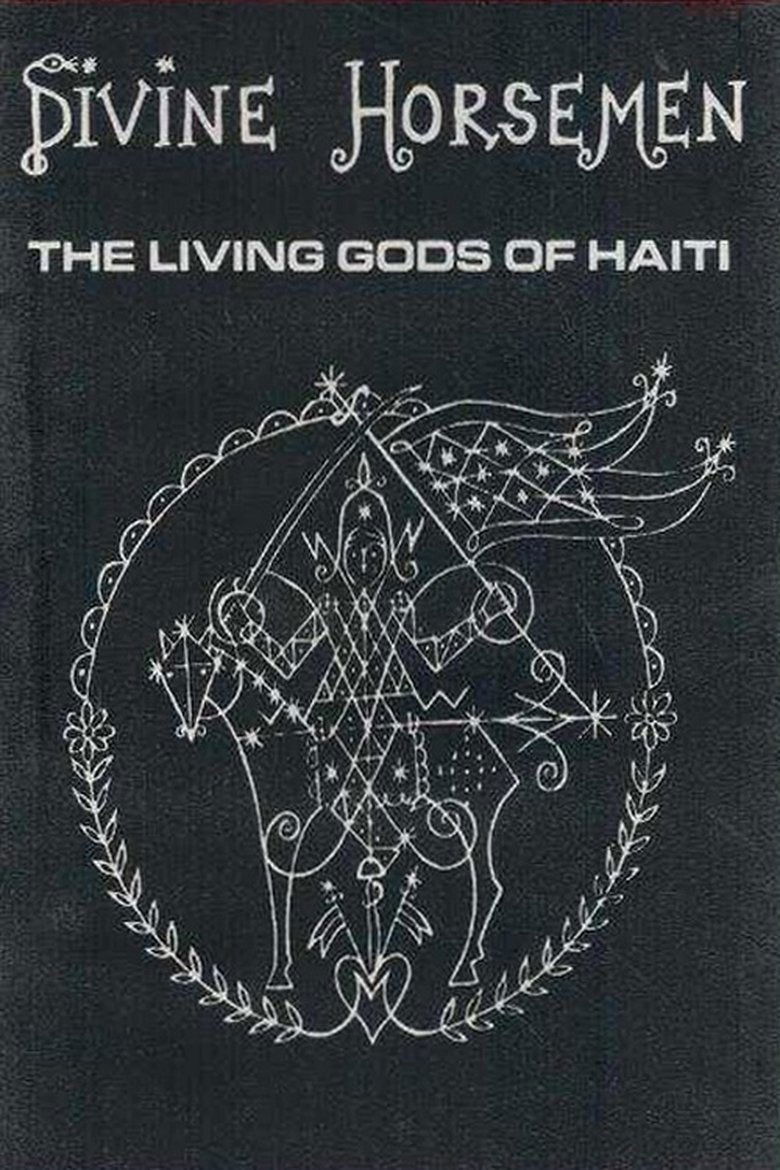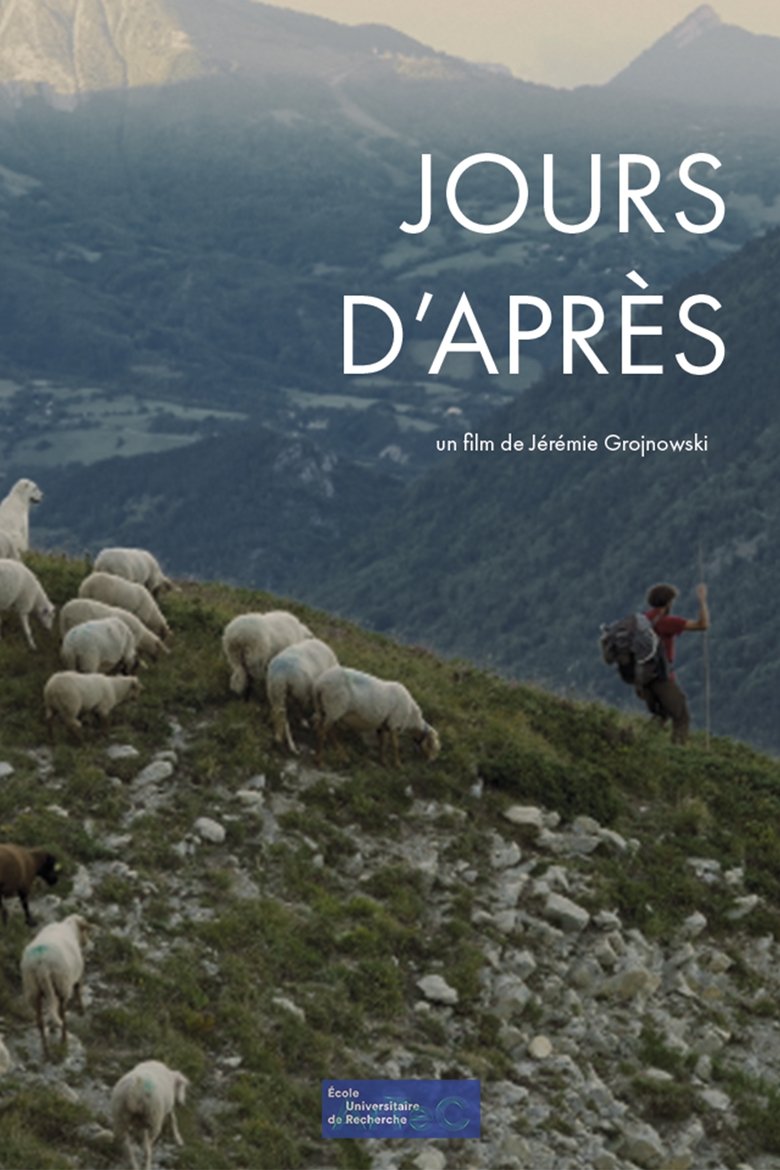
Yenendi de Ganghel, le village foudroyé
1968
0h 0m
Lightning struck the hut of a Fulani shepherd near a village of settled fishermen, Ganghel, in Niger. A yenendi, a purification ceremony to obtain "water from the sky but not fire from the sky", is organized, with Sorko priests, ritual musicians and dancers, and the faithful from Niamey. The musicians call on Dongo, god of storms, and his brother Kirey, god of lightning. To the rhythm of the orchestra, a man goes into a trance, becoming Dongo's horse and at the same time the riding genie. Then a woman is possessed by Kirey. When the riding gods have mastered their horses, the gods visit the men. Dongo purifies the lightning-struck land and the oldest fisherman prepares the purification vessel, addressing Dongo.
If current server doesn't work please try other servers beside.
Similar Movies

Saynatakuna: Masks and Transfigurations in Paukartambo
An ethnographic film that tells the story of the mask makers and dancers during the festival of the Virgen del Carmen in Paukartambo, Cuzco. The dancers reinterpret their history and socio-political forces that drive them to perform their rituals of magic and resistance. The 18 dance troupes reenact and satirize the different ethnic groups that passed through Paukartambo since the beginning of time. They connect and tell a story of the past, the present, and the future wearing hand-made colorful masks and intricate beaded costumes.
Rating:
0.0/10
Votes:
0
Year:
2015

Asante Market Women
As retailers, wholesalers, and negotiators, Asante women of Ghana dominate the huge Kumasi Central Market amid the laughter, argument, colour and music. The crew of this `Disappearing World' film have jumped into the fray, explored, and tried to explain the complexities of the market and its traders. As the film was to be about women traders, an all female film crew was selected and the rapport between the two groups of women is remarkable. The relationship was no doubt all the stronger because the anthropologist acting as advisor to the crew, Charlotte Boaitey, is herself an Asante. The people open up for the interviewers telling them about their lives as traders, about differences between men and women, in their perception of their society and also about marriage.
Rating:
10.0/10
Votes:
1
Year:
1982

Baka
For months filmmaker Thierry Knauff lived with the Cameroonian tribe, the Baka. This is his document of that time.
Rating:
7.0/10
Votes:
3
Year:
1995

The Lyrical Rongdanis
A musical documentary woven around the endangered musical culture of the Rangdani Rabhas from Manikganj, Meghalaya, North East India.
Rating:
0.0/10
Votes:
0
Year:
2021

Le Hampi - Le ciel est posé sur la terre
A ritual vase, the hampi, is placed in the center of the Musée de plein air de la République du Niger in Niamey, during a ritual ceremony featuring possession dances. With this film, Jean Rouch continues his ethnological and cinematographic study of Songhay ritual objects. He demonstrates that, in a particular context, the transfer of a hampi vase to a museum requires the organization of a ritual ceremony to obtain the gods' approval. At the time, however, reservations about filming a possession dance for the opening of a shrine in a museum made the move "questionable from a museological point of view".
Rating:
0.0/10
Votes:
0
Year:
1962

Color-Blind
A synaesthetic portrait made between French Polynesia and Brittany, Color-blind follows the restless ghost of Gauguin in excavating the colonial legacy of a post-postcolonial present.
Rating:
4.0/10
Votes:
1
Year:
2019

L'Afrique et la recherche scientifique
This documentary offers an overview of French scientific research in Africa French scientific research in Africa: hydrology, botany, biology oil palm and coconut cultivation, industrial sea fishing and and urban planning. Film montage taking stock of scientific research research in Africa, mainly in the fields of hydrology hydrology, botany, biology and agriculture. The film is a compilation of extracts from several short films made by Jean Rouch in Mali, Niger and Côte d'Ivoire between 1962 and 1963: Abidjan, port de pêche, Le Mil, Le Cocotier and Le Palmier à l'huile. l'huile.
Rating:
0.0/10
Votes:
0
Year:
1964

Las Hurdes, país de leyenda
An account of the journey that King Alfonso XIII of Spain made to the impoverished shire of Las Hurdes, in the province of Cáceres, in the region of Extremadura, in 1922.
Rating:
4.0/10
Votes:
1
Year:
1922

The River in Me
Traversing 700,000 square kilometers over 700 days, the filmmakers bring the stories of five people who crisscross the Yellow River to perform their art. At the center of the web is Su Yang, a contemporary artist and musician and his exchange with traditional practitioners of Qin Opera, Shadow Puppetry, Hua’er, and Shaanbei Storytelling.
Rating:
0.0/10
Votes:
0

Zomo et ses frères
A portrait of Zomo, the second of Damouré Zika’s many children. Employed at the zoo of the National Museum of Niger in Niamey, he offers us a tour, showing us the animals he takes care of. Then, when the work is finished, he invites us to an impromptu concert by “Jeunesse Gawey,” the “popular music” orchestra he forms with his brothers and sisters, who sing and dance for us pretty songs about their lives, their family, and Nigerien youth.
Rating:
0.0/10
Votes:
0
Year:
1975

Divine Horsemen: The Living Gods of Haiti
This intimate ethnographic study of Voudoun dances and rituals was shot by Maya Deren during her years in Haiti (1947-1951); she never edited the footage, so this “finished” version was made by Teiji Ito and Cherel Ito after Deren’s death.
Rating:
6.1/10
Votes:
16
Year:
1993

Jours d’après
In Isère, in the mountainous region of Trièves, is the Tournesol farm, an experiential farm totally autonomous in energy, a veritable laboratory for renewable energies. Jean-Philippe and his family live there from sheep farming and organic market gardening. But in September 2017, a violent fire destroyed the farm and its facilities. While the family has lost everything, a surge of solidarity is taking place so that the Tournesol farm is reborn from its ashes.
Rating:
0.0/10
Votes:
0
Year:
2020

アイヌプリ
An intimate documentary about one family's endeavor to live as Ainu in today's Japan.
Rating:
0.0/10
Votes:
0
Year:
2024

Germaine chez elle
In front of Jean Rouch's camera, Germaine Dieterlen recalls her ethnographic itinerary, at the Musée de l'Homme, in Mali and in the Paris of the 1930s.
Rating:
0.0/10
Votes:
0
Year:
1994

Hommage à Marcel Mauss. Germaine Dieterlen
Germaine Dierterlen talks about Dogon mythology at a conference on the Bandiagara cliffs. The Songo canopy is a sacred site in Bandiagara. Its walls are covered with paintings depicting the different phases of creation. A little further on, in a cave near the village of Bongo, symposium participants are discussing the Tellem, the people who lived in the houses built into the cliffs before the arrival of the Dogon. The archaeological remains and migratory movements of these two peoples are discussed.
Rating:
0.0/10
Votes:
0
Year:
1977

Germaine et ses copains
In Sangha, through the window of her house, Germaine greets Djamgouno, her main informant. He then translates for her a conversation she has with a half-blind old man. She recounts her memories of a past party at which Amadigné worked with her as an informant. Later, in front of the cliff, Germaine, Djamgouno and Pangalé are sitting on rocks, and Germaine talks about the many caves that can be visited by climbing small spelunking ladders. Rouch intervenes during the interview, asking the protagonists about the settlement of the cliff by the Dogon, who learned from the Tellem how to climb the cliff. Rouch then asks about the Tellem's predecessors who lived there 2,400 years ago. Germaine admits the ignorance of researchers on the subject, and Rouch concludes by joking about the new task that now falls to Germaine Dieterlen.
Rating:
0.0/10
Votes:
0
Year:
1996

A Wife Among Wives
David and Judith MacDougall are exploring the marriage rituals and roles of Turkana women in this ethnographic documentary. The film's biggest part is taken up by talks between the Turkana people. As one of the first ethnographic documentaries "A Wife Among Wives" subtitles these talks so that the viewer can get a better and probably more personal understanding of the life of the Turkana.
Rating:
6.0/10
Votes:
1
Year:
1981

Tourou et Bitti: Les tambours d'avant
"Tourou et Bitti", an eight minute documentary concerning a ritual in Niger, is yet another example of Rouch's excellence in creating documentaries which surpass the conventional documentary format. Just as frightening and fascinating as "Les maîtres fous", this one goes straight into the roots of ancient African cultures, in which music has an hypnotic effect, being at the same time an exorcism and a public show. Both the female and the male dancers are almost deities about to be unleashed... Spectral and humanitarian.
Rating:
5.8/10
Votes:
6
Year:
1971

Afghan Nomads (The Maldar)
At dawn a nomad caravan descends on Aq Kupruk from the foothills of the Hindu Kush. In their camp, and in commerce with the townspeople, the Maldar reveal the mixture of faith and distrust that has kept nomads and sedentary people separate and interdependent over the centuries. The theme of the film focuses on political and religious beliefs. The film and accompanying instructor notes in this series embrace five different and complex units of analysis concerning how political change occurs; individual attitudes, ethnic identity, national loyalties, institutional affiliations, and ideological beliefs.
Rating:
0.0/10
Votes:
0
Year:
1974

Le Cavalier mongol
In the Darhat valley in northern Mongolia, the horses of nomadic tribes are stolen by bandits who then sell them to Russian slaughterhouses. Shukhert, a brave horseman, relentlessly pursues them through the Mongolian taiga, bordering Siberia.
Rating:
8.0/10
Votes:
2
Year:
2021
If current server doesn't work please try other servers beside.